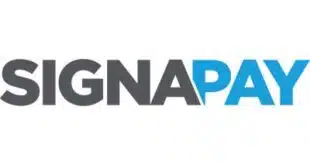For Mastercard and Visa chargeback process changes to make the most impact on friendly fraud, merchants will have to take matters into their own hands.
About a year ago, Visa Inc. rolled out a new initiative to update, modernize, and streamline chargeback procedures and the dispute-management process.
Later in the year, Mastercard began to roll out its Mastercard Dispute Resolution (MDR) program. While the MDR rollout is ongoing, the goal is the same as with Visa: Simplify the chargeback process and bring Mastercard disputes into the 21st Century.
Why are these overhauls necessary, though, and do they achieve what the companies set out to do?
Dense And Complex
The chargeback process was introduced more than 40 years ago. Although the market has changed dramatically in that time, how we manage disputes hasn’t changed much at all. That disconnect between decades-old procedures and the realities of what has become a digital-enabled marketplace has developed into a very costly problem.
The foundations of our existing chargeback processes were developed in a pre-Internet age, and so they were not designed with e-commerce in mind. This has led to the development of a costly new fraud source, called friendly fraud.
Friendly fraud occurs when a customer files a chargeback without proper justification. That individual could be motivated by buyer’s remorse, or by having mistaken a legitimate purchase listed on a billing statement for fraud, or even by confusion about chargeback and merchant-return policies. In any case, the user disputes a sale, and, in most cases, the merchant loses.
Friendly fraud has flourished in recent years for several reasons:
Convenience and customer entitlement: Contemporary consumers feel entitled to supreme convenience. If they don’t get it, they may file a chargeback.
Pace of change: Developments in technology and other institutional practices left chargeback procedures out of date and unresponsive to current conditions in the market.
Inconsistent standards: Each card scheme has its own complex system of rules and procedures. Merchants can’t keep up.
Widespread access to payment cards: Payment cards are far more commonplace than they were in 1974. Thus, the volume of transactions—and disputes—is much higher.
Despite these and numerous other problems, there seemed to be little will to modernize the process until recently. As mentioned, chargeback policy is dense and complex. A complete overhaul would be a massive undertaking. At this point, though, it’s no longer possible to deny change must come for the chargeback system.
Key Policy Changes
Both the Visa Claims Resolution (VCR) and MDR initiatives are attempts by the respective card schemes to modernize the chargeback process. These overhauls represent a response to the demands of a contemporary, digital marketplace.
Looking at the two initiatives, some of the key changes include:
New workflows: All VCR disputes are now filed into one of two workflows, allocation or collaboration. The former will automatically assign liability to the party responsible, while the latter is largely identical to the preexisting Visa dispute process.
New reason codes: All of Visa’s reason codes saw changes with VCR. The Mastercard changes were less extensive and were primarily focused on eliminating irrelevant or redundant codes.
New processes: With a Mastercard dispute, issuers must check for refunds/reversal prior to a chargeback to prevent unjust enrichment and double refunds.
New uses for existing tools: While the older Visa Resolve Online system was already a useful avenue of communication, VCR adoption made this system the primary means to resolve a Visa dispute.
New timelines: Both VCR and MDR involve time reductions for cardholders, banks, and merchants to initiate and resolve a dispute.
The changes to Visa and Mastercard procedures introduced under these policy overhauls share two common goals: reduce dispute volume and achieve faster and fairer resolution. Still, while the initiatives represent progress, we’re still far from the kind of change we really need.
Shortcomings
Neither initiative really addresses one of the core issues with chargebacks: friendly fraud. It’s still too easy for a customer to make a false claim and file a dispute. As long as that’s the case, we’re still going to see problems with chargeback processes.
In a broader sense, the problem with policies like these is that they don’t address the inconsistent standards at the core of our friendly-fraud problem. Complex rules and procedures specific to one card scheme or one class of disputes make chargeback processes almost indecipherable for individual merchants.
This results in a snowball effect. The longer we go without universal rules and procedures, the worse current challenges get.
Standardizing chargeback procedures and regulations across card schemes would simplify things greatly. We could then establish standard practices and responses for banks and merchants, which is the only way to address the ongoing problems caused by friendly fraud.
Merchants’ Burden
In the meantime, the burden for preventing friendly fraud still falls to merchants. But how can they meet it?
The first step in reducing friendly-fraud disputes is to distinguish friendly-fraud chargebacks from those caused by criminal fraud or merchant errors. This is possible by adopting a number of tools and strategies, including:
Verification tools: Fraud scoring, Address Verification Service (AVS), CVV verification, 3-D Secure, geolocation, and transaction-velocity limits are all valuable tools to identify potential fraud. Merchants should use them in a coordinated effort to better identify fraud attacks.
Optimize customer service: Before customers file disputes, they should first try resolving issues through customer-service channels. Providing round-the-clock, live, and responsive customer service is a great way to deter these buyers from requesting a chargeback.
Exercise best practices in fulfillment: Merchants want to reassure customers that they’re not some “fly-by-night” scam. This can be achieved by offering fast response with tracking and delivery confirmation. Notifying customers in the event of potential delays is also key.
Manage subscriptions: With recurring payments, merchants shoud communicate any changes in their terms of service. Also, they should make it as easy as possible to cancel service and fulfill cancellation requests promptly.
With these practices in place, merchants can filter out most criminal fraud and merchant-error chargebacks. This leaves just friendly fraud, which can be addressed with chargeback representment.
Chargeback regulations and processes are highly complex, varied, and inconsistent across different card schemes. Most merchants don’t have the time or resources to dedicate to chargeback remediation. In these cases, it’s best to turn to professional chargeback management.
Until we have a more consistent, dynamic, and developed chargeback environment that is responsive to the realities of contemporary e-commerce, merchants will see chargebacks continue to increase.
—Monica Eaton-Cardone is cofounder and chief operating officer of Chargebacks911, Clearwater, Fla.




